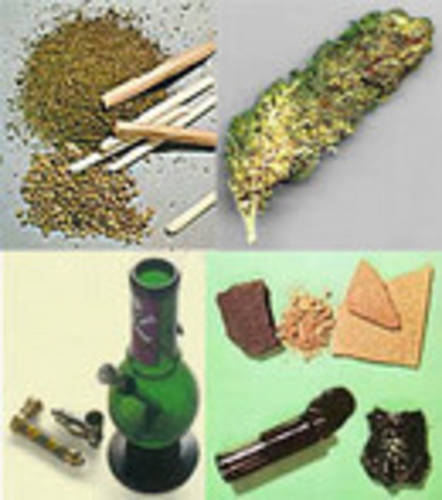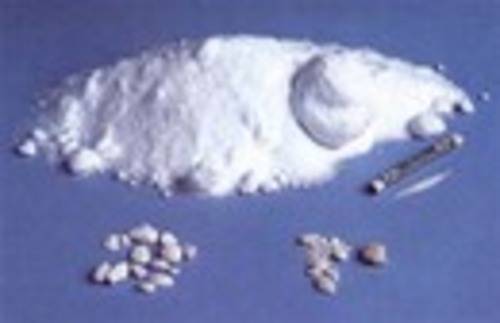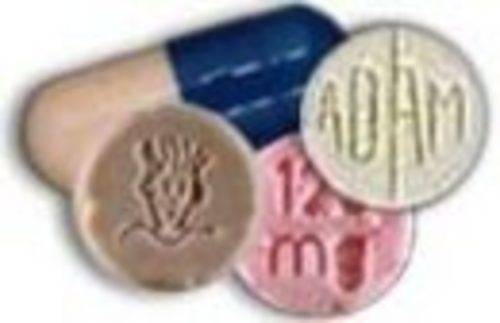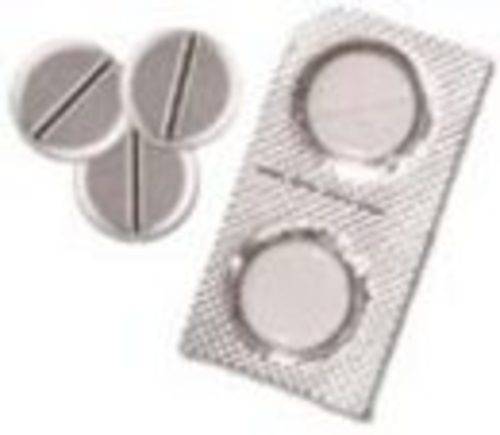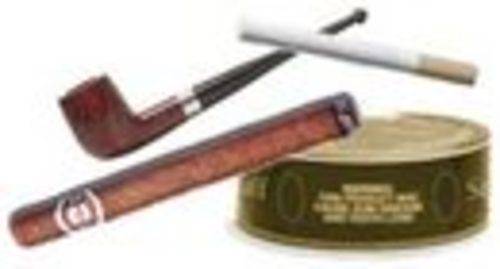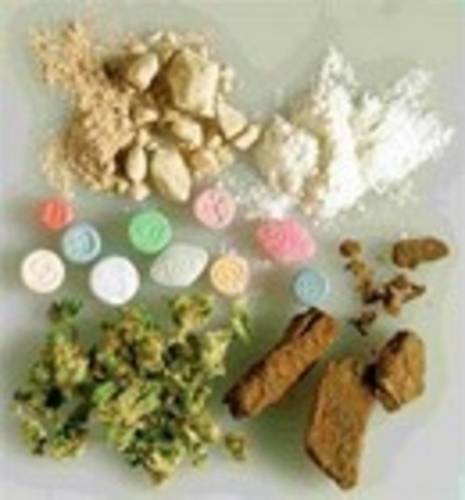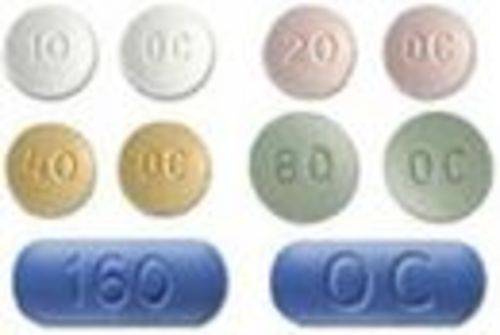Community Outreach
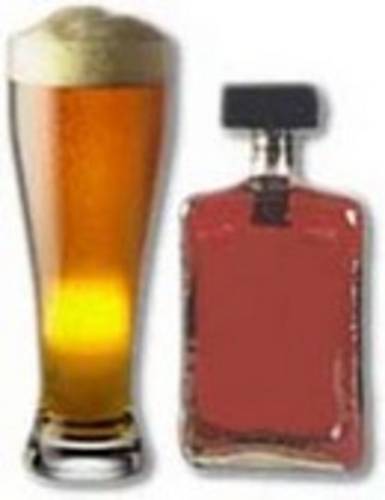 |
The Stone County Sheriff's Office fully supports interaction with the community it serves. Many of the programs that the Stone County Sheriff's Office supports are designed to reach and teach the youth in this community and to warn them of the dangers of drugs and alcohol.
Also, Sheriff Lance Bonds engages in speaking to youths and civic groups, when called upon, to discuss a wide range of topics and concerns in Stone County. Sheriff Lance Bonds feels that being able to speak to the citizens of Stone County, to address concerns and to hear the input and ideas of the public, is a major part of "Protecting and Serving" this community.
Other outreach programs include a Christmas program, "Deputy Santa", which provides toys, clothes, and food to families with children that might not otherwise be able to enjoy the Christmas season. In 2009, 42 families were visited by "Santa" with 79 children receiving toys and clothes. Each family also received a complete Christmas dinner.
The Stone County Sheriff's Office also directs those in need to the Stone County Resource Council's Dorcas House, where food and clothing is available to those in need, as well as assistance in times of crisis.
One of the major programs that is conducted by the Sheriff's Office is the youth school programs, being able to sit and speak to the students at our schools. Topics of drugs and alcohol abuse are discussed, and the interaction with the students creates close bonds between the youth and the Deputies.
If a civic or community group would like to have Sheriff Lance Bonds attend and speak at any gathering or function, please call Sheriff Lance Bonds at the Sheriff's Office (870-269-3825). He would be pleased to hear from you and assist you.
Drugs/Alcohol
Drugs Drug abuse impacts our society on many different levels. Directly or indirectly, drug abuse affects every community and family. Drugs take a tremendous toll on our society. The information on this site is provided in an effort to educate you on the types of drugs that are most prevalent in our society and more importantly our community.
The most frequently abused substances of choice, by the youth of Stone County are Alcohol, Prescription Medication, and Marijuana.
To report illegal drug activity or information call 870-269-3825 or email sheriff@stonecountysheriff.com or tips@stonecountysheriff.com
ALCOHOL
Alcohol is the most frequently used drug by high school seniors, and its use is increasing. Boys usually try alcohol for the first time at just 11 years old, while the average age for American girls' first drink is 13.
Approximately 11 million American youth under the age of 21 drink alcohol. Nearly half of them drink to excess, consuming five or more drinks consecutively, one or more times in a two-week period.
Street Names
Beer, wine, liquor, cooler, booze, malt liquor
Type of Drug
Alcohol is a depressant
Appearance
Alcohol is used in liquid form
Use
Alcohol is drunk
Short Term Effects
- constricted peripheral blood vessels
- dilated pupils
- increased temperature, heart rate, blood pressure
- insomnia, nausea, vomiting
- loss of appetite
- dizziness, slurred speech
- feelings of restlessness
- irritability
- anxiety
- depression
- fatigue
Long Term Effects
- addiction
- aggressive paranoid behavior
- severe anxiety
- depression
- ulceration of mucous membrane of nose (when vapors are snorted)
- permanent damage to liver and brain
Alcohol & the Law - penalties for teens caught with alcohol
Public Service
Fine
License Suspension
Education
Treatment
1st offense
mandatory
$100-$500
90-120 days
mandatory
2nd offense
mandatory: no fewer than 30 days
$200-$500
1 yr - 18 months
mandatory
3rd offense
mandatory
$500-$2000
lesser of 3 yrs or until age 21
mandatory
COCAINE
Cocaine is the most potent stimulant of natural origin. It is extracted from the leaves of the coca plant.
When mixed with ammonia or sodium bicarbonate, also known as baking soda, and other ingredients cocaine solidifies into pellets or "rocks". These rocks are called crack cocaine.
Street Names
Cocaine: coke, snow, nose candy, snowbirds, flake, blow, white, big C
Crack: rock, freebase, baseball, pebbles, apple jacks, 151, half track, pony
Type of Drug
Cocaine is a potent brain stimulant and one of the most powerfully addictive drugs.
Appearance
Cocaine is distributed on the street in two main forms: cocaine hydrochloride is a white crystalline powder and "crack" is in the form of chips, chunks, or rocks.
Use
Cocaine can be snorted or dissolved in water and injected. Crack can be smoked.
Short Term Effects
- constricted peripheral blood vessels
- hallucinations
- dilated pupils
- increased temperature, heart rate, blood pressure
- loss of appetite
- restlessness, anxiety, insomnia, fatigue
- temporary euphoria, followed by irritability, depression
- seizures
Long Term Effects
- paranoia, aggressive paranoid depression
- ulceration of the mucous membrane of the nose (if snorted)
- heart attack
- respiratory failure
- death
CRYSTAL METH
Methamphetamine is a powerful, addictive stimulant that dramatically affects the central nervous system. It stimulates an excessive release of Dopamine, a key hormone in the regulation of the sensation of pleasure.
Meth can be made with relative ease by those with no knowledge of chemistry, with simple household products, and with over-the-counter drugs such as cold medicines with pseudoephedrine as the main ingredient.
Street Names
Meth, speed, crank, crystal, ice, fire, croak, crypto, white cross, glass, chalk
Type of Drug
Methamphetamine is an addictive stimulant drug that strongly activates certain systems in the brain. Crystal meth is a very pure, smokable form of methamphetamine.
Appearance
Meth is a crystal-like powdered substance that sometimes comes in large rock-like chunks. Meth is usually white or slightly yellow, depending on the purity. Crystal meth looks like shards of glass or ice chips.
Use
Methamphetamine can be taken orally, injected, snorted, or smoked
Short Term Effects
- irritability, aggression
- anxiety, nervousness
- convulsions, hallucinations
- insomnia
- increased blood pressure
- loss of appetite
Long Term Effects
- addiction
- damage to teeth
- extreme weight loss
- suicidal tendencies
- extreme paranoia, toxic psychosis
- hallucinations, convulsions
- repetitive behavior patterns
- delusions of parasites or insects under the skin
- stroke
- heart and blood vessel toxicity
- long-term damage to brain cells similar to that caused by strokes or Alzheimer's disease
Withdrawal Symptoms
- fatigue
- long disturbed periods of sleep
- irritability
- intense hunger
- moderate to severe depression
- psychotic reactions
- anxiety
ECSTASY
Ecstasy (MDMA) is a synthetic psychoactive drug with a chemical structure similar to the stimulant methamphetamine and the hallucinogen mescaline. MDMA was first manufactured by a German company
in 1912, possibly to be used as an appetite suppressant. MDMA has been available as a street drug since the 1980s.
Street Names
MDMA, Adam, Bean, E, M, Roll, X, XTC
Type of Drug
MDMA or Ecstasy (3-4-methylenedioxymethamphetamine) is a synthetic drug with amphetamine-like and hallucinogenic properties.
Appearance
Ecstasys come in a tablet form that is often branded, e.g. cartoon characters, Nike swoosh, CK.
Use
Taken in pill form.
Short Term Effects
- depression
- sleep problems
- drug craving
- severe anxiety, paranoia, confusion
- muscle tension, involuntary teeth clenching
- blurred vision, rapid eye movement
- faintness, nausea
- chills, sweating
Long Term Effects
- long-term damage to part of brain critical to thought and memory
- long-lasting, permanent damage to neurons that release serotonin
INHALANTS
Inhalants are breathable chemicals that produce intoxicating vapors. Inhalant use refers to the intentional breathing of gas or vapors with the purpose of reaching a high. Inhalants are legal, everyday products which have a useful purpose, but can be misused. You're probably familiar with many of these substances - paint, glue, and others. But you probably don't know that there are more than 1,000 products that are very dangerous when inhaled.
Inhaling fumes from products like hairspray, nail polish, and spray paint is so popular, that almost one in five kids has done it before the 8th grade. It is just as popular as marijuana.
Street Names
Nitrous oxide, whippets, laughing gas
Type of Drug
Inhalants aren't drugs in the regular sense of the word. They are in the form of household products that are inhaled or sniffed by children to get high. There are hundreds of household products on the market today that can be misused as inhalants.
Appearance
Examples of products kids abuse to get high include model airplane glue, nail polish remover, cleaning fluids, hair spray, gasoline, the propellant in aerosol whipped cream, spray paint, fabric protector, air conditioner fluid (freon), cooking spray and correction fluid.
Use
These products are sniffed, snorted, bagged (fumes inhaled from a plastic bag), or "huffed" (inhalant-soaked rag, sock, or roll of toilet paper in the mouth) to achieve a high. Inhalants are also sniffed directly from the container.
Short Term Effects
- intoxication
- loss of consciousness
- headache
- muscle weakness, fatigue, lack of coordination
- abdominal pain, nausea
- severe mood swings, violent behavior
- decrease or loss of sense of smell, nosebleeds
- numbness, tingling of the hands and feet
- hearing loss
- limb spasms
Long Term Effects
- hearing loss
- limb spasms
- decrease in heart, respiratory rates
- hepatitis or peripheral neuropathy
- central nervous system or brain damage
- blood oxygen depletion
- heart failure
- death
MARIJUANA
Marijuana is considered the most widely used illicit drug today. It is estimated that there are as many as 28,000,000 users in America alone. Marijuana is usually the first illegal drug adolescents experiment with. This experimentation typically occurs around the age of 12.
Marijuana is a green or gray mixture of dried, shredded flowers and leaves of the hemp plant. All forms of marijuana are mind-altering drugs that contain THC, which is the main active chemical in marijuana. There are about 400 chemicals in a cannabis plant, but THC is the one that most greatly affects the brain.
Street Names
Weed, pot, reefer, grass, dope, 420, ganja, Mary Jane, sinsemilla, herb, Aunt Mary, skunk, boom, kif, chronic, gangster
Type of Drug
Marijuana is a product of the hemp plant, Cannabis sativa. The main active chemical in marijuana, also present in other forms of cannabis, is THC (delta-9-tetrahydrocannabinol).
Appearance
Marijuana is a green or gray mixture of dried, shredded flowers and leaves of the hemp plant (Cannabis sativa).
Use
Most users roll loose marijuana into a cigarette called a "joint". It can be smoked in a water pipe, called a "bong", or mixed into food or brewed as tea. It has also appeared in cigars called "blunts".
Short Term Effects
- problems with memory, learning
- distorted perceptions
- trouble with thinking, problem-solving
- loss of motor coordination
- increase heart rate
- anxiety, panic attacks, paranoia
- dry mouth, throat
- bloodshot eyes
- impaired driving ability
Long Term Effects
- cancer
- lung, immune system damage
- lack of motivation
- problems in the reproductive system
If Someone is High on Marijuana, He or She Might:
- seem dizzy, uncoordinated, and have trouble walking
- seem unfocused, silly, and giggly for no apparent reason
- have delayed responses to questions or sounds
- have a strong, smoky odor in clothes or hair
- avoid coming near you, in fear you may smell marijuana
- have bloodshot eyes
OXYCONTIN
OxyContin is a time-release tablet that contains large amounts of oxycodone and is used legitimately to
treat moderate to severe pain, but is abused for its heroin-like effects. Opioids like OxyContin and heroin block pain messengers to the brain and central nervous system. They also increase the amount of dopamine in the brain, which increases feelings of pleasure and euphoria.
Street Names
killers, OC, OXY, oxycotton, hillbilly heroin, poor man's heroin
Type of Drug
OxyContin (oxycodone HCI controlled-release) is the brand name for an opioid analgesic - a narcotic. Oxycodone is the narcotic ingredient found in Percocet (oxycodone and acetaminophen) and Percodan (oxycodone and aspirin). OxyContin is used to treat pain that is associated with arthritis, lower back conditions, injuries, and cancer.
Appearance
OxyContin is available in tablet form in 4 doses: 10, 20, 40, and 80mg.
Use
As pain medication, OxyContin tablets are taken every 12 hours. Most pain medications must be taken every three to six hours. Oxycontin abusers remove the sustained-release coating to get a rush of euphoria similar to heroin. They chew the tabs, crush them for snorting, or boil the powder for injection.
Short Term Effects
- respiratory depression
- constipation
- nausea, vomiting
- sedation
- dizziness, weakness
- headache
- dry mouth
- sweating
Long Term Effects
- addiction
- cardiovascular damage
- liver, kidney disease
- arthritis
- greater risks for women during pregnancy
ROHYPNOL
Rohypnol's medical use is to treat insomnia or anxiety but is widely known as the "date rape" drug. It can incapacitate a victim and prevent them from resisting sexual assault.
Street Names
Date rape drug, roach, roofies, forget pill, ruffies, rope, rophies, R2, rib, roofenol, la roche, rib
Type of Drug
Rohypnol is the brand name for a drug called Flunitrazepam, which is a powerful sedative.
Appearance
A small white tablet with no taste or odor when dissolved in a drink.
Use
Rohypnol is swallowed as a pill, dissolved in a drink, or snorted. It can be used as a predatory drug, otherwise known as a "date rape" drug.
Short Term Effects
- sleepy, drunk feeling
- blackouts with complete loss of memory
- dizziness, disorientation
- nausea
- difficulty with motor movements and speaking
Long Term Effects
- physical addiction
- psychological addiction
TOBACCO
Tobacco use is the single most preventable cause of death in the United States. Approximately 80% of adult smokers started smoking before the age of 18. 25% of white high school students in the United States are current spit tobacco users.
Street Names
Cigarettes, cigars, pipes, chew, dip, smoke, butt, snuff, bone, coffin nail, cancer stick
Type of Drug
Tobacco is an agricultural crop
Appearance
Brown cut up leaves.
Use
Tobacco is usually smoked. Sometimes tobacco leaves are "dipped" or "chewed" so the nicotine is absorbed via the gums.
Short Term Effects
- increase in blood pressure, heart rate
- increase of blood flow from the heart
- narrowed arteries
- brittle yellow fingernails
- headaches
- yellow teeth
- acne
- nausea
- discoloration
Long Term Effects
- chronic lung disease
- coronary heart disease
- stroke
- cancer of the lungs, larynx, esophagus, mouth (smokeless tobacco, cigars)
- cancer of the bladder, cervix, pancreas, kidneys
- adverse birth outcomes in pregnant women
Facts
- tobacco smoke contains about 4,000 chemicals, including 200 known poisons
- every time a person smokes, poisons such as benzene, formaldehyde & carbon monoxide are inhaled
- chewing tobacco contains toxic substances such as:
- Cadmium - used in car batteries
- Uranium 235 - used in nuclear weapons
- Lead - as in lead poisoning
- Nicotine - more addictive than crack cocaine
- Formaldehyde - put in dead people
- chewing tobacco users are fifty times more likely to get oral cancer than non-users
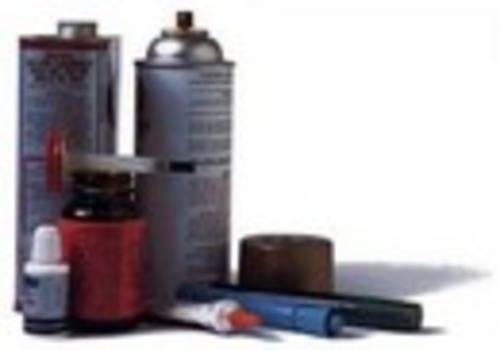 Inhalants |
|
|
|
|
|
|
|
|
|
|
The specific aim of this project is to reduce residential burglary levels in Stone County through offering TIPS and more things RESIDENTS can do to help curb elevating residential burglary numbers and deter would be burglars.
- Make your home look occupied, and make it difficult to break in.
- Lock all outside doors and windows before you leave the house or go to bed even if it is for a short time.
- Leave lights on when you go out and if you are going to be away for a length of time, connect some lamps to automatic timers to turn them on in the evening and off during the day.
- Keep your garage door closed and locked.
- Don't allow daily deliveries of mail, newspapers or flyers build up while you are away. Arrange with the Post Office to hold your mail, or arrange for a friend or neighbor to take them regularly.
- Arrange for your lawn to be mowed if you are going away for an extended time.
- Check your locks on doors and windows and replace them with secure devices as necessary. Pushbutton locks on doorknobs are easy for burglars to open. Install deadbolt locks on all your outside doors. Sliding glass doors are vulnerable. Special locks are available for better security. Other windows may need better locks. Check with a locksmith or hardware store for alternatives.
Don't Tempt a Thief:
- Lawn mowers, barbecues and bicycles are best stored out of sight. Always lock your garden sheds and garages.
- Use curtains on garage and basement windows.
- Never leave notes on your door such as "Gone shopping."
Locks...Get the Best!
- No lock, regardless of its quality, can be truly effective. Key-in dead bolt locks provide minimum security. Ask a locksmith for advice on your situation.
- Change locks immediately if your keys are lost or stolen.
- When moving into a new home, have all locks changed.
Targeting the Outside:
- Have adequate exterior lighting. A motion-sensitive light is recommended for backyards.
- Trim trees and shrubs so that they cannot be used as hiding places for intruders.
- Make sure your door hinges are on the inside.
Windows:
- Most windows can be pinned for security. Drill a 3/16" hole on a slight downward slant through the inside window frame and halfway into the outside frame - place a nail in the hole to secure the window.
Alarms:
- An alarm system is excellent for home security. It provides peace of mind to homeowners, especially while on vacation. There is a wide variety of alarm systems on the market. Make several inquiries to different companies for the best security system available to you.
- If you have a home alarm system, use it! Activate your alarm system - Alarm systems are only useful when you remember to activate them. Many individuals have alarm systems but do not arm them because it is inconvenient. Many burglars know this and will not be deterred by a window sticker or sign indicating that the home has an alarm system.
If your home is broken into or you find an unexplained open/broken window or door:
- Do not enter - the perpetrator may still be inside.
- Use a neighbor's phone to call police.
- Do not touch anything or clean up until law enforcement have inspected for evidence.
- Write down the license plate numbers of any suspicious vehicles.
- Note the descriptions of any suspicious persons.
Other precautions you should take:
- Never leave keys under doormats, flowerpots, mailboxes or other "secret" hiding places -- burglars know where to look for hidden keys.
- Keep a detailed inventory of your valuable possessions, including a description of the items, date of purchase and original value, and serial numbers, and keep a copy in a safe place away from home - this is a good precaution in case of fires or other disasters.
- Make a photographic or video record of valuable objects, heirlooms and antiques. Your insurance company can provide assistance in making and keeping your inventory.
- Trim your shrubbery around your home to reduce cover for burglars.
- Be a good neighbor. If you notice anything suspicious in your neighborhood, call 9-1-1 immediately.
- Mark your valuables with your driver's license number with an engraver you can borrow from your precinct. Marked items are harder for a burglar to dispose of and easier for police to recover.
- Form a Neighborhood Watch Group. We can help you work with your neighbors to improve security and reduce risk of burglary.
- Consider installing a burglar alarm system.
Tips on how to avoid car break-ins:
- Do not leave valuables in plain view: (GPS devices, lap tops, PDA's, cell phones, MP3's, wallets, purses)
- Do not leave windows or sunroof open.
- Do not leave doors unlocked.
- Do not leave keys in the vehicle.
- Do not leave the garage door opener in plain view.
- Do not leave out items with personal information.
- Do not move valuable items to the trunk while in public view.
- Slow Down and use common sense before you leave your car.
Additional Information
Arkansas Attorney Generals Office
Arkansas Beverage Control Board
Arkansas Child Abuse & Neglect Prevention Board
Arkansas Commission on Child Abuse, Rape and Domestic Violence
Arkansas Department of Correction
Arkansas State Crime Lab
Arkansas State Police
Arkansas Tobacco Control
Crime Victims Repartations Board
U.S. Immigration and Customs Enforcement
Victims Notification Program which allows eligible victims and witnesses to obtain reliable and timely information regarding a criminal alien's release from custody. Victims and Witnesses are required to register with U.S. Immigration and Customs Enforcement agency in order to receive notification of a criminals alien's release.
For more information on this program, click here: https://www.ice.gov/vesl
 Get Alerts
Get Alerts



